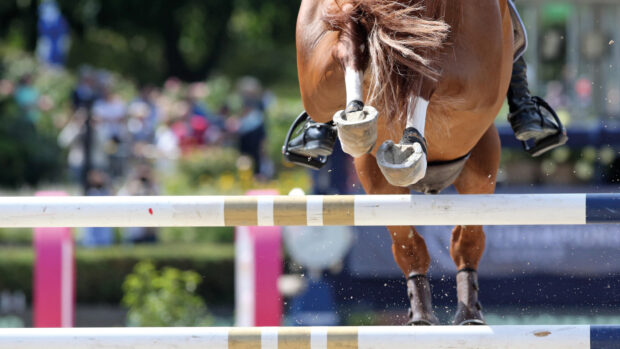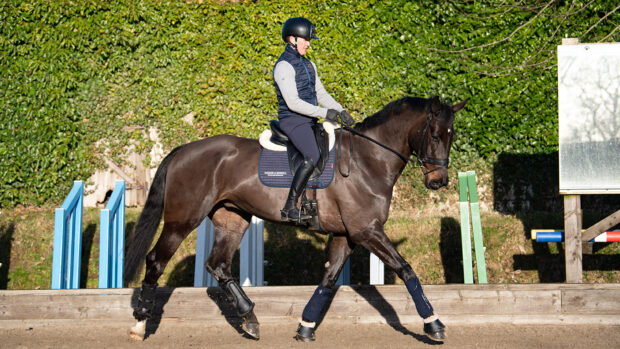Q: “How do I teach my young horse to be a good jumper? I’ve just had a horse dropped off for me to ride. He’s a five-year-old and I’ve been told he’s a good jumper with potential. On the flat he’s lovely, just what I’m looking for. We’ve had a go over some little (60/70cm) jumps and it’s hit and miss whether he clears or goes through it. What would you suggest I do for training with him? I have a plan I just maybe want some fresh ideas to consider. I really want this to work and for him to be what I want in a jumper. Ideally he’d get round a 90cm/1m course and around 1.25m single fences.”
A: I’d put a lot of time into pole work so that your horse develops his confidence and gets his timing right.
Working over poles will encourage your horse to use his back correctly, and also encourage greater flexibility in the joints. Poles will also help him develop confidence over distances and an awareness of his legs and feet as he will have to figure things out for himself.
As a rider, the ground poles will test your balance and independence of seat. Remain balanced while your horse navigates the poles, keeping a light seat and making sure your knees and ankles are free to absorb the extra bounce and movement. You don’t want to become stiff and rigid.
Continued below…
Related articles:
Don’t be afraid to adjust the poles to your horse’s stride as you are working on building your horse’s confidence. Allowing him to feel comfortable going over the poles is key.
Start with five canter poles on the ground three paces or nine feet apart. Once your horse is cantering down the poles calmly and in a good rhythm on both reins, raise them; alternate ends first and then both ends. We use potties at home which are only a £1 each and really easy to move around!
As he is young, he’s bound to be weak so make sure you get that box ticked first doing plenty of work with poles. You can lunge him over poles too.
When you are ready to progress to jumps, use poles with your jumping. Put a placing pole three yards in front of a fence and a landing pole a good three and a half to four yards on the other side.
You can use this for a cross pole or an oxer. A cross pole is great for teaching your horse to jump and stay in the centre of the fence and encourage him to make a tidy shape.
By using canter poles before and after the fence, it will help your horse to jump in the right spot and will help with his timing, which could be why he is a bit might be a bit hit and miss at times.
Don’t be afraid to ask a trainer for help too as having someone on the ground is invaluable.
I personally wouldn’t be worried about jumping too big too soon. Keep it small so that he develops his confidence and he gets his timing right.
On the flat, make sure you have good gears in your canter. Not only will this help your horse develop strength and balance but it will also help you with your distances when you are jumping courses.




